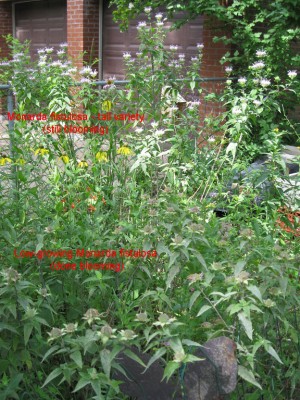Are we inadvertently destroying the Missouri native plant Space-Time Continuum? (The last 3 words borrowed from Star Trek.)
Seriously, I wonder if we are introducing plants into our local gene pool that may change the genetic make-up of our local species. To prevent this, the source of origin should be as close to your yard as possible.
We all buy plants from local plant nurseries that grow native plants. We encourage them to grow them for us. It is certainly easier to buy full grown plants than to grow them ourselves. However, do we know where these nurseries get their seeds or cuttings?
Source is different than location
Even when we grow from seed ourselves, do we know the source of the seeds? The source of origin for the plant is not where it was raised. The source of origin is where it was originally collected. We “Wild Ones” exchange seeds each year at our annual seed exchange potluck dinner. Some of us collect seed from the wild, but mostly we exchange seed from the plants we grow in our yards – plants whose source of origin may be unknown.
Native plants are adapted to the local climate
Local native plants are adapted to our climate zone and soil type. They are adapted to our coldest lows and our warmest highs. They are adapted to our amount of rainfall. They are genetically similar but not exactly the same as plants grown hundreds of miles north or south of here.
Case in point
I have two different Monarda fistulosa (wild bergamot) growing in my yard. One I grew from seed I collected in central Missouri. The other was in a seed package I was given years ago, advertised as a tall-grass prairie mixture. I believe it was from a northern state’s prairie. The flowers and leaves look identical. The Missouri Monarda blooms two weeks earlier and is a foot shorter than the northern plant. I’m thinking this is because each plant is responding to its own genetically-timed signal.
Potential consequences
Survival of the fittest may eliminate the plants that should not be here. In theory, local genes are better suited and will have a better chance of long term survival. Are we altering the genes by cross pollination between the introduced plants and the plants of local origin? Does this make them stronger or weaker?
Plants and pollinators
Native pollinators have co-evolved with native plants. Hard at work in my yard in St. Louis, they don’t seem to notice a difference between the two different types of Monarda. I wonder if the same insects in my yard are pollinating the prairie in Minnesota or if it would be different species there.
Because the Monarda blooms in the middle of the summer, most pollinators seem to be awake and busy. What would happen to an early-spring-blooming plant that we bought 500 miles south of here? A plant that blooms when its genetic clock tells it to bloom and is done blooming before the insect it needs to fertilize it is awake?
I have more questions than answers. Just wondered if any of you have thought about this?
Kathy Bildner
To help me with my thoughts I read:
-“Selecting Native Plant Material, ensuring local adaption and maintaining genetic diversity” Authors B. Winthrow-Robinson and R Johnson
-“Collecting Seed from Locally Native Plants” by David Lockwood



I can see the potential problems of moving plants north or south – different bloom times, etc. Are there similar issues with moving plants east/west? Several of the plants in my yard are from Kentucky – similar latitude, climate, etc. Is that less of a problem?
I discovered one example of a problem potentially created by moving plants westward out of their range. Thousand cankers disease is killing black walnut trees in the western U.S.
One theory is that the fungus started on other species of Juglans native to the southwest that are at least partly resistant to it. When non-native black walnuts were planted in the southwest, the beetle carrying the fungus moved to them and began spreading eastward.
The disease now threatens black walnuts in Missouri. Read more, and may have been caused by humans messing with the “space-time continuum” of native plants.
Thanks Brian
I know when we go camping out west there are signs up in the campgrounds asking campers not to move the local firewood from the campground and not to introduce wood from distant places.
Kathy Bildner